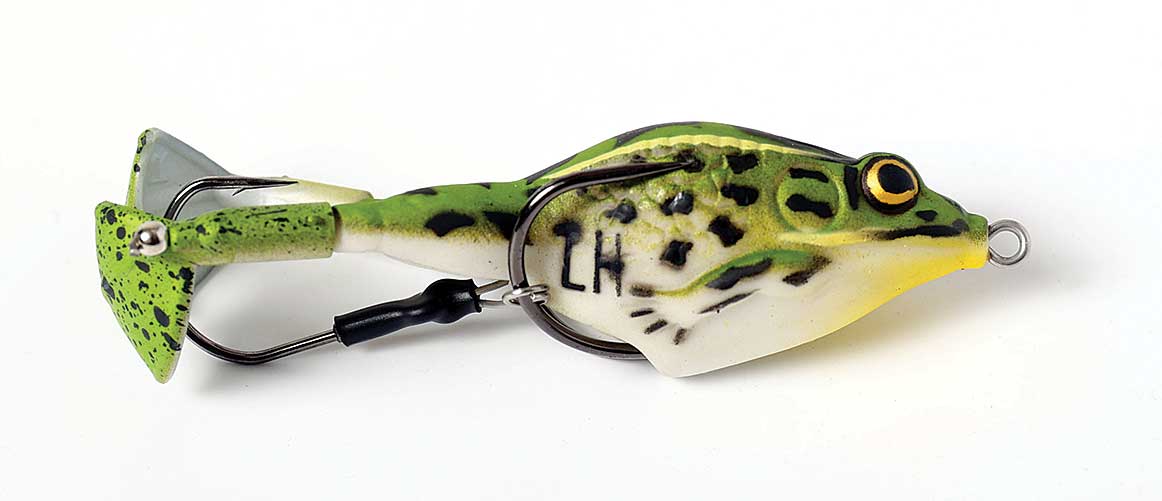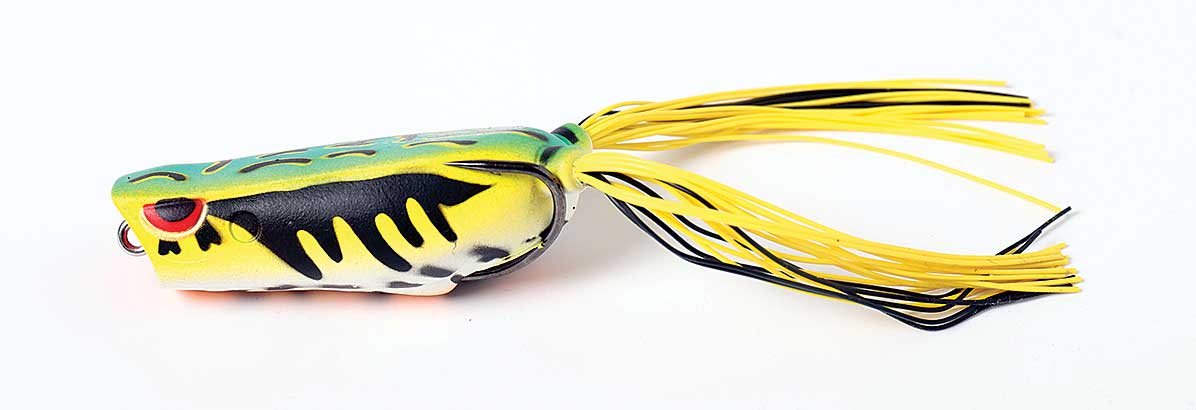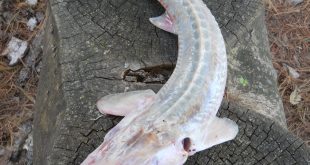Tips on how to catch more largemouth bass with a frog
Enlarge

Photo by Jeff Kurrus, Nebraskaland Magazine
By Ryan Sparks
Casting a frog into a weed-choked farm pond and watching a largemouth bass explode from beneath is arguably the most fun you can have while fishing. Most people think of July and August as the dog days of summer — fish retreat to deep water and heavy weeds make fishing difficult. In this situation, pulling a hollow-bodied frog over the top and catching big bass feels like cheating the system. The aquatic plants that were once your enemy quickly become your friend when you realize they give bass places to hide and ambush your hollow-bodied frog. Getting bass to strike a frog isn’t difficult, but getting them to the net is a different story. Here’s how to tip the odds in your favor and make your frog fishing more productive.
Stiff Rods and Heavy Line
Landing more bass on frogs starts with the right gear. I love to use light rods and finesse fish as much as anyone, but featherweight gear has no place in frog fishing. Heavy baitcasting rods with plenty of lifting power are preferable. Look for a heavy rod that is 7 feet long or longer. Stout rods help you cast farther, and they also help with hooksets and lifting hooked fish that are wrapped in vegetation.
Pair your frog rod with a beefy, fast-retrieve reel. A fast retrieve lets you take up slack quickly when a fish strikes, and it also saves your wrist during hours of cranking.
Lastly, and probably most importantly, spool your reel with braided line. Fifty-pound line isn’t overkill. No, you aren’t going to catch a 50-pound bass, but you will be thankful for the extra power when you need to horse a big bass out of the slop.

Upgrade Your Kermit
When I started frog fishing, most of the fake frogs available were low quality and poorly designed. They quickly ripped open and filled with water, and the hooks they came with were subpar at best.
Now, most hollow-bodied frogs come with sticky sharp hooks, glide effortlessly over weeds, and they last an entire summer or more. A few extra dollars for a good frog is worth it. Some of my personal favorites are the Spro Bronzeye Frog, Reaction Innovations Swamp Donkey and Lunkerhunt Prop Frog. To prevent bass from striking short, I trim an inch or 2 off the rubber legs. I also prefer black frogs because of the contrast they create when a bass is looking up.
Patience and Power
It is easy to get excited and instantly set the hook when a bass smashes your frog, but you will miss the majority of fish by setting the hook too soon. The key to hooking and landing bass on a frog is to wait a few seconds and then make a powerful hook set. To force yourself to wait, lower the rod and reel up any slack in the line. Then put your back into it and set the hook. You almost can’t set the hook too hard. Waiting to set the hook is a hard skill to learn but you will be rewarded with a calloused bass thumb.

Here’s one last tip. No matter what you do, sometimes a fish just plain misses the frog. In this situation, have a heavy spinning rod with a wacky-rigged worm ready to go. A bass that hits a frog is in a predatory mood and will often circle back looking for its victim. A slowly sinking worm will often draw a second strike. When I first tried it, I was amazed how well this tactic works.
Gettin’ Froggy with It
Come summer, I can’t wait to get a frog swimming. The bites are explosive and can yield some hefty bass. Having the right equipment, a quality frog and a good hookset are the three keys to success. Put them together and your hands will smell like bass all summer long.
 Nebraskaland Magazine
Nebraskaland Magazine


